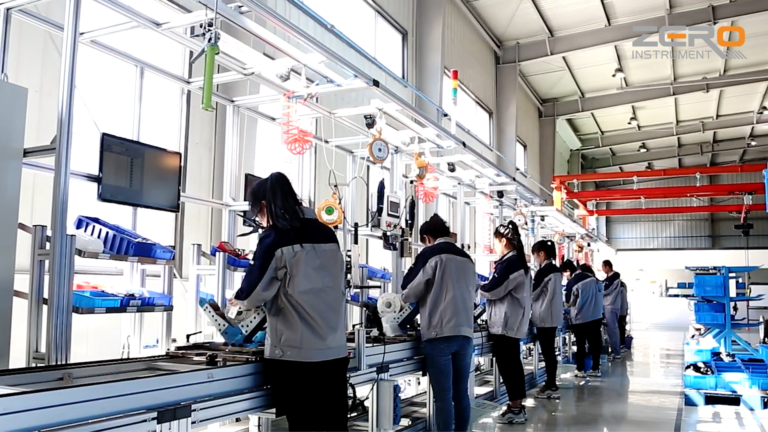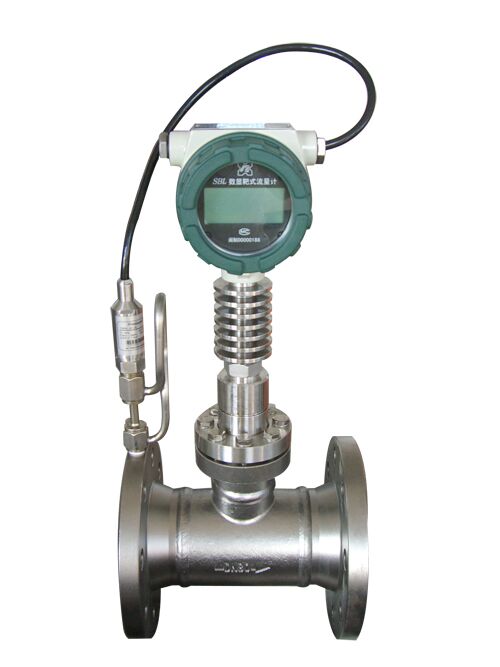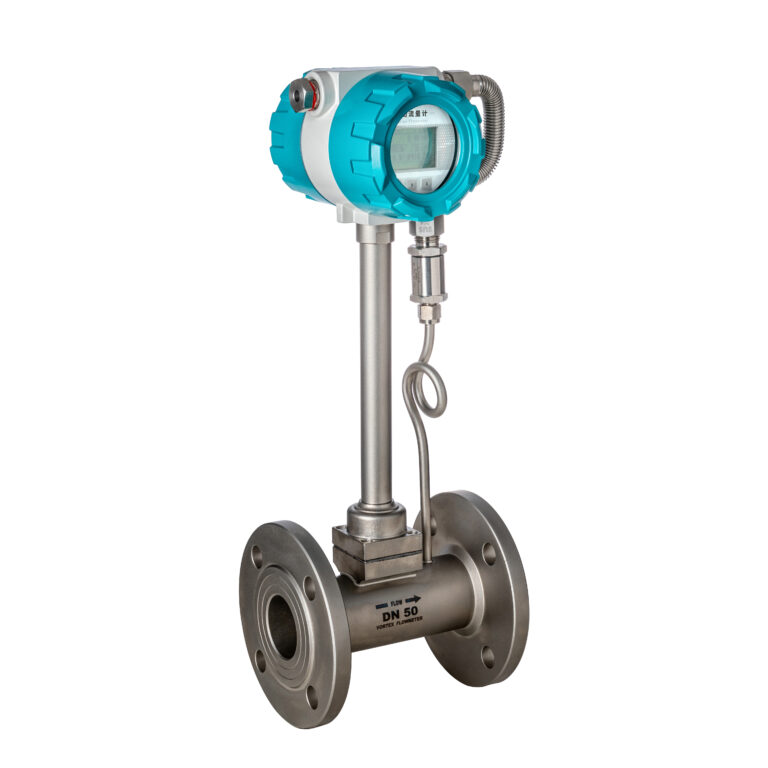Flow measurement is a crucial aspect of many industrial processes, enabling accurate monitoring and control of fluid dynamics in pipelines. Different types of velocity-based flowmeters are designed to measure the flow rate of liquids, gases, and steam under various conditions. In this article, we will explore the features and typical applications of several common types of velocity flowmeters.

1. Target Flowmeter
The target flowmeter is suitable for measuring the flow of liquids with higher viscosity and containing small solid particles. This type of flowmeter is often employed when precision requirements are not stringent, with an accuracy level of no higher than 1.5, and a turndown ratio of no more than 3:1. The target flowmeter is typically installed in horizontal pipelines. The required straight pipe length upstream of the flowmeter ranges from 15 to 40 times the pipe diameter (D), while the downstream section should be at least 5D long.
Applications: Target flowmeters are commonly used in industries where fluids with solid particles or high viscosity are present, such as wastewater treatment plants, chemical processing, and food production.

2. Turbine Flowmeter
Turbine flowmeters are used for measuring the flow of clean gases and liquids with a kinematic viscosity of no more than 5×10−6m2/s5 \times 10^{-6} m^2/s5×10−6m2/s. When precise measurements are needed and a turndown ratio of up to 10:1 is acceptable, the turbine flowmeter is a suitable choice. These flowmeters are installed in horizontal pipelines and must ensure that the liquid fully fills the pipe. The installation should also include upstream and downstream shut-off valves, a bypass valve, and a filter on the upstream side. Downstream, a drain valve should be installed. The straight pipe length required is no less than 20D upstream and 5D downstream.
Applications: Turbine flowmeters are ideal for precise flow measurements in industries handling clean fluids, such as natural gas distribution, water treatment, and petrochemical processing.

3. Vortex Flowmeter (Kármán Vortex Street Flowmeter)
The vortex flowmeter, also known as the Kármán vortex street flowmeter, is widely used for measuring medium to high flow rates of clean gases, steam, and liquids. However, it is not recommended for low-velocity fluids or liquids with viscosities greater than 20×10−3Pa\cdotps20 \times 10^{-3} \text{Pa·s}20×10−3Pa\cdotps. When selecting a vortex flowmeter, it is essential to verify the pipe velocity. This type of flowmeter features minimal pressure loss and is easy to install. For installation, the straight pipe length upstream should be 15 to 40D, depending on the piping configuration. If a flow straightener is installed, the upstream pipe length can be reduced to no less than 10D, with at least 5D required downstream.
Applications: Vortex flowmeters are used in steam boilers, chemical processing plants, and HVAC systems for energy monitoring, where accurate flow measurements of gases and steam are critical.

4. Water Meter
Water meters are a specific type of flowmeter designed for cumulative water flow measurement. They are often used when the turndown ratio is less than 30:1. Water meters are installed in horizontal pipelines, with the required straight pipe lengths being no less than 8D upstream and 5D downstream.
Applications: Water meters are prevalent in residential water supply systems, irrigation, and industrial processes where cumulative water usage needs to be monitored.

Installation Considerations
For all types of velocity flowmeters, ensuring proper installation is crucial for achieving accurate and reliable flow measurements. This typically includes maintaining appropriate straight pipe lengths upstream and downstream of the flowmeter to minimize turbulence and ensure laminar flow conditions. Additionally, attention should be given to the specific fluid characteristics, such as viscosity and presence of solid particles, to select the appropriate flowmeter type.
In summary, selecting the right flowmeter depends on the specific application requirements, including the type of fluid, the desired accuracy, and the acceptable pressure loss. By understanding the unique features and limitations of each type of flowmeter, industries can ensure precise and efficient flow measurement in their processes.
